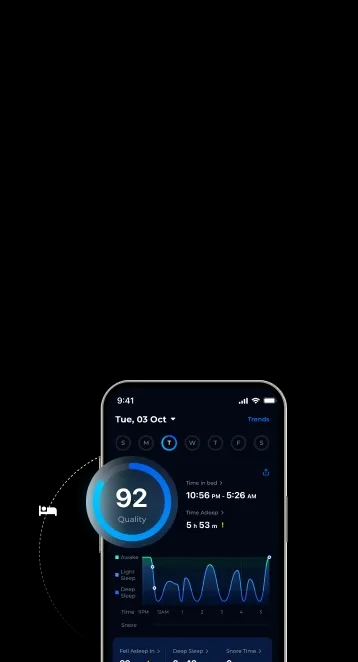


Do you struggle with restless legs disrupting your sleep? Are you over 40 and experiencing symptoms of obstructive sleep apnea? Exploring the link between Restless Leg Syndrome and Sleep Apnea can help you manage these conditions better.
Discover effective treatment options, like CPAP therapy or oral appliances, to enhance your sleep quality and overall well-being. Take steps towards a restful night’s sleep today.
When considering Restless Legs Syndrome (RLS) and Obstructive Sleep Apnea (OSA), you may notice common characteristics that link these two sleep disorders.
Both RLS and OSA can disrupt your sleep, leading to excessive daytime sleepiness and decreased quality of life. Individuals with RLS often experience an uncontrollable urge to move their legs due to uncomfortable sensations, while OSA is characterized by pauses in breathing during sleep, leading to fragmented sleep patterns.
Age is a significant factor in the development of both conditions, with older individuals being at higher risk. Understanding these shared traits can help you recognize the importance of seeking proper diagnosis and treatment to effectively manage RLS and OSA for better sleep and overall well-being.
Experiencing symptoms of Restless Legs Syndrome (RLS) and Obstructive Sleep Apnea (OSA) can intensify with advancing age. As you grow older, the likelihood of developing RLS and OSA increases. It’s common for older adults to experience more severe RLS symptoms and have a higher risk of OSA.
Research shows that 8.3% of individuals with sleep apnea also have clinically significant RLS. Understanding the impact of age on these conditions is crucial for seeking appropriate treatment and management strategies. If you’re noticing symptoms worsening with age, consulting a healthcare provider for a proper diagnosis and personalized care is essential.
Addressing RLS and OSA promptly can significantly improve your quality of life as you age.
Limiting your alcohol intake before bedtime and quitting smoking can help alleviate symptoms of both Restless Legs Syndrome (RLS) and Obstructive Sleep Apnea (OSA). Additionally, certain habits can worsen these conditions. Below is a table outlining habits that can affect RLS and OSA:
| Habits That Affect RLS and OSA | Impact on Conditions |
| Alcohol Consumption | Worsens symptoms and disrupts sleep |
| Smoking | Aggravates symptoms and breathing |
| Caffeine Intake | Negatively impacts sleep quality |
| Late-night Eating | Can lead to discomfort and reflux |
To improve your sleep hygiene for managing Restless Legs Syndrome (RLS) and Obstructive Sleep Apnea (OSA), establish a consistent bedtime routine. Here are three essential tips to help you achieve better sleep quality:
Establishing a consistent bedtime routine and improving sleep hygiene are essential steps in managing Restless Legs Syndrome (RLS) and Obstructive Sleep Apnea (OSA), encompassing treatment approaches for both conditions.
For RLS, taking a hot bath before bed and avoiding electronic devices emitting blue light can help. Simultaneously, Continuous Positive Airway Pressure (CPAP) machines and oral appliance therapy are beneficial for managing both RLS and OSA. Research supports positive outcomes with oral appliance therapy for treating both conditions.
Seeking treatment for both RLS and OSA simultaneously is crucial for comprehensive management. Consulting a specialist like Dr. Jeff Rodgers, who’s expertise in treating RLS and OSA, can provide personalized care and effective treatment options.
Prioritize seeking treatment to improve health and well-being.
If you have both obstructive sleep apnea (OSA) and Restless Legs Syndrome (RLS), clinicians suggest a potential association between the two disorders. While it’s not entirely clear if one directly causes the other, there seems to be a link, especially with sleep-disordered breathing like OSA potentially increasing the risk of RLS.
Cognitive therapy could offer benefits for managing both conditions. Interestingly, individuals with both OSA and RLS often exhibit higher insomnia-specific psychological symptoms.
Seeking treatment for both OSA and RLS is crucial for comprehensive management. By addressing these conditions simultaneously, you may improve your overall health and well-being. Don’t hesitate to consult healthcare providers for proper diagnosis and personalized treatment options tailored to your specific needs.
Seek timely treatment for both Restless Legs Syndrome (RLS) and Sleep Apnea to effectively manage symptoms and improve overall well-being. Timely intervention is crucial in addressing these conditions to prevent further complications.
Don’t delay seeking help for RLS and Sleep Apnea; take the first step towards better health today.
In conclusion, managing both Restless Legs Syndrome and Sleep Apnea is crucial for improving your sleep quality and overall well-being. By making lifestyle changes, seeking specialized treatment, and addressing both conditions simultaneously, you can take proactive steps toward a restful night’s sleep.
Remember to prioritize your health and seek timely treatment to effectively manage RLS and OSA for a better quality of life. Don’t hesitate to take control of your sleep health and seek the help you need.
Cleveland Clinic (2023) Restless Legs Syndrome [online]. Available at: https://my.clevelandclinic.org/health/diseases/9497-restless-legs-syndrome
El-Solh, A. A., Moitheennazima, B., Akinnusi, M. E., Churder, P. M., & Lafornara, A. M. (2011). Combined oral appliance and positive airway pressure therapy for obstructive sleep apnea: a pilot study. Sleep & breathing = Schlaf & Atmung, 15(2), 203–208. https://doi.org/10.1007/s11325-010-0437-1
Lakshminarayanan, S., Paramasivan, K. D., Walters, A. S., Wagner, M. L., Patel, S., & Passi, V. (2005). Clinically significant but unsuspected restless legs syndrome in patients with sleep apnea. Movement disorders : official journal of the Movement Disorder Society, 20(4), 501–503. https://doi.org/10.1002/mds.20366
Slowik JM, Sankari A, Collen JF. Obstructive Sleep Apnea. [Updated 2024 Mar 21]. In: StatPearls [Internet]. Treasure Island (FL): StatPearls Publishing; 2024 Jan-. Available from: https://www.ncbi.nlm.nih.gov/books/NBK459252/